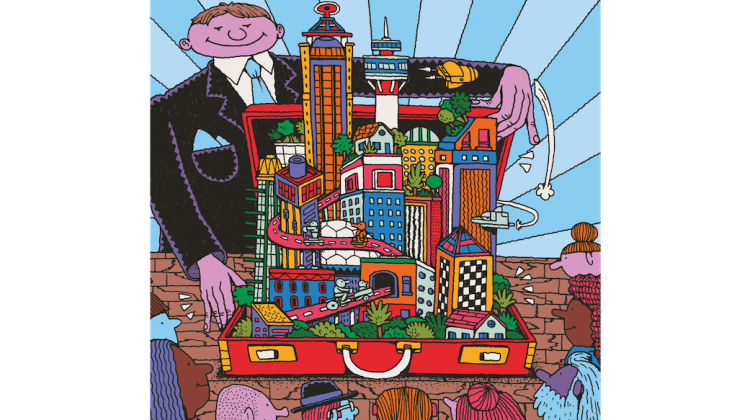Exploring Private vs Public City Development

"There is nothing new about cities built by investors and corporations. Celebration, Fla., was developed by the Walt Disney Company and includes buildings from architectural giants like Philip Johnson and Robert A.M. Stern. (Disney has sold off most of its holdings.) Not far from Seoul, the Songdo International Business District was developed by a consortium of real estate developers; it is planned around a two-square-mile eco-friendly, high-tech downtown that is meant to house over 60,000 people," write Harvard's Edward Glaeser and DUSP's Carlo Ratti in a New York Times Opinion piece. "There is also no rule that cities planned by governments are morally superior. In 1910 the mayor of Baltimore, Barry Mahool, signed America’s first racial zoning ordinance, explicitly barring Black Americans from moving into majority-white city blocks, leaving the city hypersegregated for decades. During the 1960s, the high-water mark of racial segregation, a private developer named James Rouse planned an integrated city in nearby Columbia, Md. Columbia is not perfect, but it remains racially diverse, and according to data from the Opportunity Atlas, it does vastly better than nearby Baltimore at promoting upward mobility for Black American children."
In their piece, "Billionaire-Built Cities Would Be Better Than Nothing," Glaeser and Ratti explore the company Flannery Associates' efforts to design and build a new city to help address housing affordability in the Bay Area.
Glaeser is the Fred and Eleanor Glimp Professor of Economics and the Chairman of the Department of Economics at Harvard University. His work focuses on the determinants of city growth and the role of cities as centers of idea transmission. Ratti is the Professor of Practice of Urban Technologies and Planning at MIT. His work explores how new technologies are changing the way we understand, design and ultimately live in cities.


